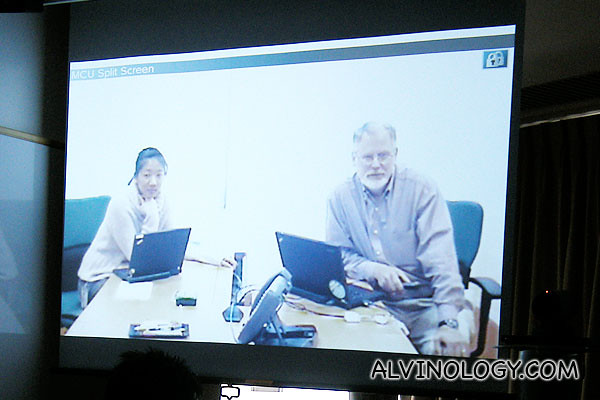
About a month back, I was invited by the folks from Google to attend a Search Workshop conducted by Dan Russell, resident search guru and scientist from Googleplex, the corporate headquarters complex of Google, Inc., located in Mountain View, California.
The workshop was conducted via a video conference and was attended by about a dozen journalists and bloggers.

Here’s a few interesting pointers I took away:
– When searching for an abstract object – eg. an unknown flower you came across on your way to work, search in the simplest possible language to describe the object that most others will also describe the same way. To search for a dandelion, type something like “flower with parts you can blow” under image search.
– Use more CTL-F (or Apple-F for Mac) to speed up searching within a page. Apparently, majority of Internet users do not know how to use the common CTL-F search function which I took for granted. If you do not know this, press CONTROL + F now and search a random word to learn!
– Google actually has calculator function whereby you can type in mathematics symbols into the search bar and answers will be provided!
Here is the link to a page on Google that provides more useful search tips.
Below is a table provided by Google Singapore’s PR Agency, The Hoffman Agency which nicely summed up the learning at the workshop:
| SCENARIO | TIPS |
| Skills for understanding results Scenario: Searchers tend to read or scan the results page when working on their task and its crucial they they pick out the words they are looking for. But what do you need to know about search to be good at it? And what strategies do you need to use to search the results page? |
Tip 1: It’s important to know what information is out there and what needs to be found. Also, it is essential to have a search strategy – such as how to frame the question, when to stop researching and when to change the approach.Tip 2: Use Google Translate to translate from English to a foreign language and vice versa. It also enables you to find information from sites written in other languages through cross-language search. |
| Think synonymously: There are times when we need to search for a term that we only know by concept. Example: we want to find out the term used to describe the small version of the sculpture in wax or clay when an artist is making a sculpture for a client. It is usually a preliminary sketch presented to the client for approval. |
Tip 3: The easiest solution to search this is to key in ‘small sculpture model’ in the search box then read through the snippets for unusual words to find a possible match. The answer is Maquette. To double check, you can use Google as a dictionary and key in ‘define:maquette’ and you’ll get a definition immediately. |
| Naming the un-nameable Challenge: Everyone has a little indentation on their upper lip. But what is that called? |
Tip 4: Start with the simplest search you can think of which is ‘upper lip indentation’. If it’s not right, you can always modify it. When you click on the results page, you’ll find out that its called a philtrum.Then you double check it by using Google as a dictionary; key in ‘define:philtrum’. |
| Using the minus sign Challenge: Sometimes you want to look up something that’s pretty common, so there are lots of search results. It’s even worse when the word is really common. So how do you eliminate things you don’t want? For example, can you find a great recipe for salsa to make for dinner tonight? What if your partner is allergic to tomatoes. Can you find a salsa recipe without tomatoes in it? |
Tip 5: The trick here is to emove all salsa dance and tomato references. The quickest way is to include the MINUS sign in the search field, so it looks like this: “salsa –dancing –tomatoes”. The search results will then show salsa recipes without tomato as an ingredient. |
| Searching within a site Imagine if you were Dan Russell and someone mentioned that you were quoted in the New York Times online site. How do you find the page where you were quoted? |
Tip 6: Use “site: operator” to search within a particular web site [for example, “Daniel M Russell” site:nytimes.com]. Note that you need to include the ‘M’ in the name and you need to use the double quotation mark. This is important because “Daniel Russell” is a very common name and The NYTimes has the convention of always spelling a person’s name out completely, including middle initials. So its important to understand the publication’s way of writing as well. |
Have fun fiddling around with online searches to hone your search capability. I had fun improving mine.
Technorati Tags: google singapore, google dan russell, dan russell, search guru, search guru dan russell, dan russell search workshop, google singapore search workshop, the hoffman agency singapore, hoffman singapore, google search workshop, google search singapore, dan russell singapore







![[Review] Under S$1k, New LUMOS ATOM Home Cinema 1080p Portable Projector [Review] Under S$1k, New LUMOS ATOM Home Cinema 1080p Portable Projector - Alvinology](https://media.alvinology.com/uploads/2022/10/lumos-new-projector-03-1024x576.jpg)


